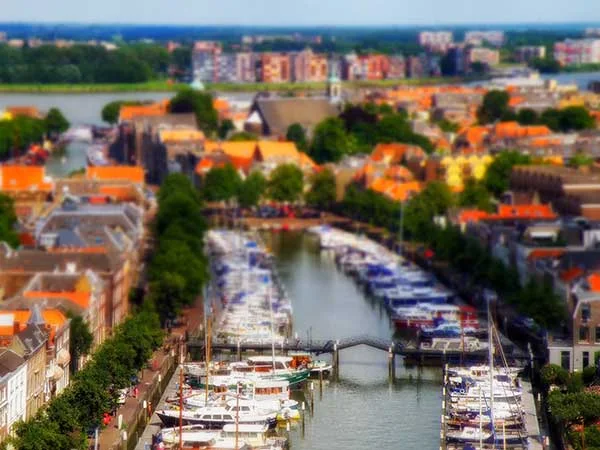Here is the easy way to create a tilt-shift effect in Paint.NET using the Gaussian Blur, the Gradient tool, and the Hue/Saturation adjustments. We'll begin by duplicating the image layer, apply the Gaussian Blur to the duplicate layer, draw a gradient and then adjust saturation using the Hue/Saturation adjustments. Let's get started!
If you liked my tutorials, please subscribe to my YouTube channel - JTSGraph.
Steps to make a tilt-shift effect in Paint.NET:
1. Open image.
Go to File>Open... (Ctrl+O). Use the Navigation pane on the left to navigate to a location on your computer where you have your images. Click the image you want to open, then click Open.
For this Paint.NET tutorial, I'll use this image, 354609, downloaded from Pixabay.
2. Duplicate layer.
Choose Layers>Duplicate Layer (Ctrl+Shift+D). In the Layers window, a duplicate layer with the default name of Background appears above the original Background layer.3. Apply Gaussian blur.
Select the duplicate layer. Choose Effects>Blur>Gaussian blur. Drag the Radius slider to alter how wide and strong the effect you want to apply.In the Options Bar, choose Linear (Reflected) and Transparency Mode.
Draw a transparent gradient, right-click and drag on the canvas from bottom to top.
5. Adjust Hue/Saturation.
Change the saturation of the colors in the image. Choose Adjustments>Hue/Saturation (Ctrl+Shift+U). Drag the Saturation slider slightly to the right until you are satisfied with the miniature effect.
6. Save document.
Choose File>Save command in the top menu or else just press Ctrl+S to save your project file. The Save As window appears. Navigate to the folder where you want to store your project file. Type a name in the File name text box and leave the default Paint.NET (*.pdn) format. Pdn is Paint.NET's native format and is useful because it stores everything about your image and will allow you to later edit your image in Paint.NET, in case you notice a problem. Click Save to store the project file.Once you have finished, you will probably also want to export the image in a more widely used format, such as JPEG, PNG, TIFF, etc.










No comments:
Post a Comment